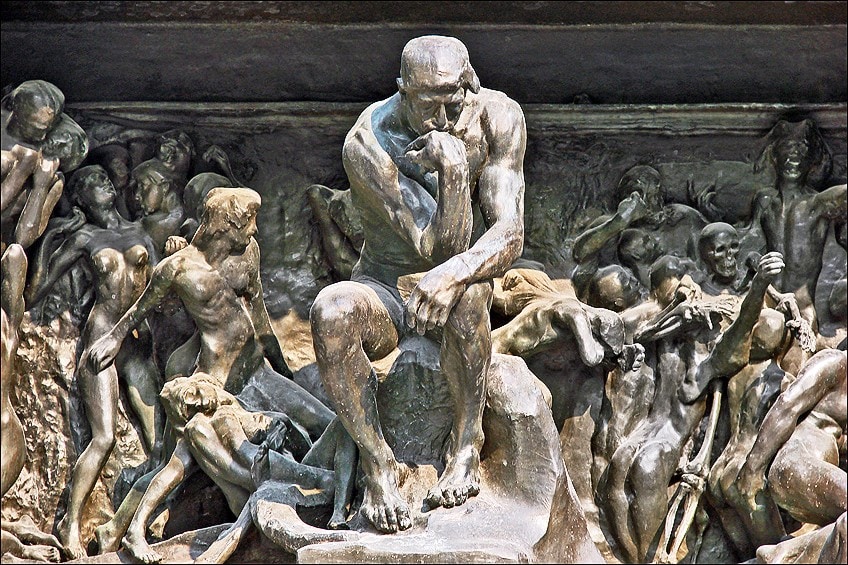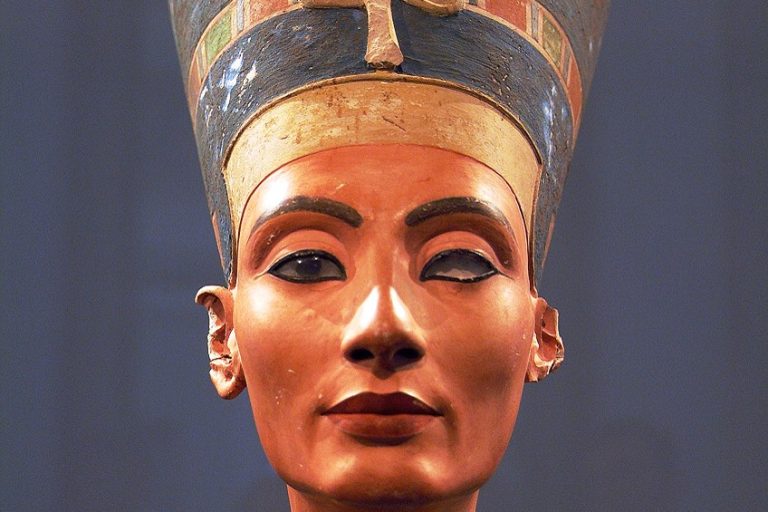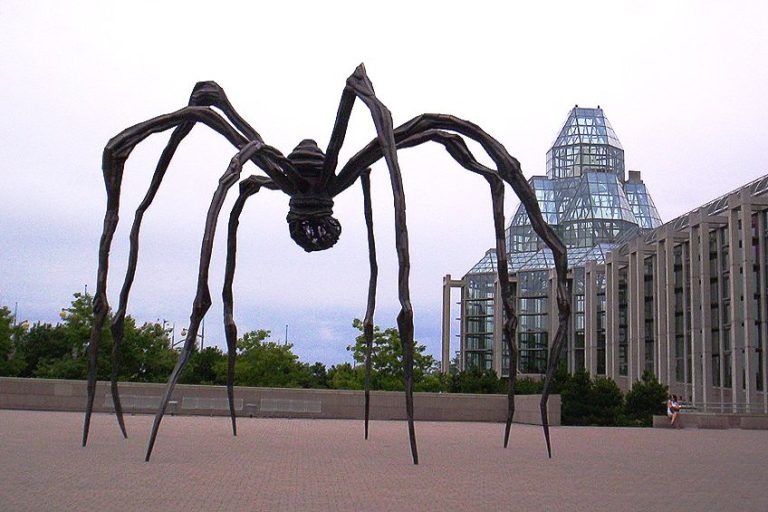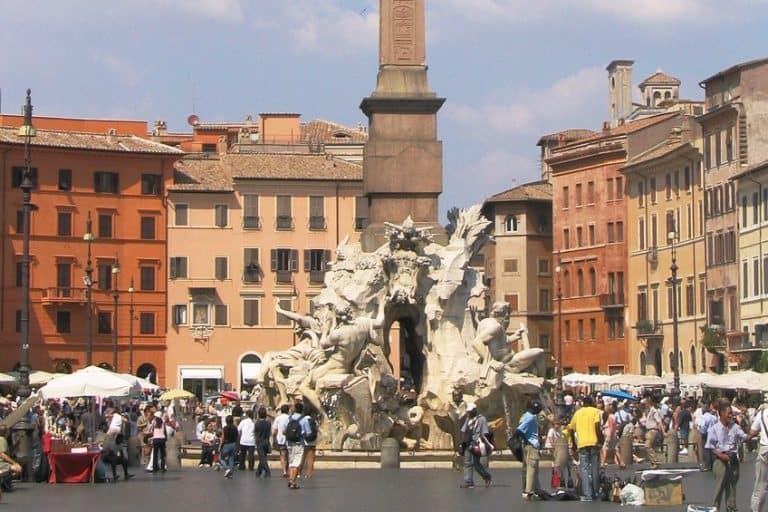Types of Sculpture – Our Guide to 3-Dimensional Art Formats
The sculpting arts have lasted as one of the most prominent forms of human expression throughout the world. Types of sculpture have been utilized by several civilizations to express a significant significance and remember their leaders or other crucial societal figures. These sculpture types range in size from small enough just to fit in the flat of a hand to massive stone reliefs cut into the mountainside.
Types of Sculpture
Sculpture art has been used in a variety of ways throughout recorded history. Understanding what distinguishes all the various forms of the sculpture allows us to appreciate the effort and expertise necessary to create such works. In this post, we will answer questions such as “What is a sculpture?” and look at each of the most common sculpture types and how they vary from one another.
We will also be exploring the various elements of sculpture and the materials used in sculpture.
Relief Sculpture
Reliefs are one of the earliest styles of sculpture, dating back to 25,000 years ago in caves in eastern Europe and other regions of the world. The degree to which these forms of sculptures vary in depth is what distinguishes the various types of relief sculpture.
Reliefs can be as basic as a minor etching into the wood, stone, or other material backdrop or as intricate as the majority of three-dimensional masterpieces done through history. High relief sculptures are substantially more three-dimensional than other types of relief.
These sculptures are often cut and chiseled very deeply into the material and can occasionally stand out with more than half of the piece being ‘in the round.’ High relief works were popular thousands of years ago and were a popular technique employed by ancient societies to embellish temples and other notable constructions. Low relief is the most prevalent style of relief sculpture. Low relief works, as the name implies, have a very low amount of depth that the sculptor employed in producing the sculpture itself.

This form of sculpture may be done on almost any surface and is considerably easier than high relief since the artist has a much smaller chance of damaging the sculpture. Almost every civilization on Earth has utilized low relief sculpture to portray key parts of their society and beliefs at some time. A bas-relief sculpture is similar to low relief work, but it gets its name from the Italian word basso or the French term bas, which both imply “low”. These terms are occasionally used alternately, and the Italian name basso rilievo is thought to be a far earlier term for these sculptures.
Bas-relief sculpture was popular among the ancient Assyrian and Egyptian societies, which etched their hieroglyphic culture and literature onto stone tablets.
The sunken relief sculpture artworks are said to be an old technique utilized by Egyptians and other prehistoric societies that kept much of their history on stone or wooden tablets. Sunken relief artistic sculptures, as opposed to low relief sculpture types, are created on a generally flat background, with the carving used to show linear boundaries and contours.
It’s called a ‘sunken’ relief because the landscape and the characters are on the same plane as the background’s flat surface. These forms of sculptures’ core figures do not extend from the main surface in the same manner as low and high relief sculptures do. Counter relief sculptures, as the name implies, are the polar opposite of higher and lower relief works. Instead of protruding outwardly, the figures and forms are carved deeper into the piece to suggest different levels of depth.
This is a more recent kind of sculpting that is employed in what many characterize as an abstract technique of sculpture and was not often used by ancient artists. Counter relief sculpture is essentially a type of engraving in which the backdrop surface is carved into rather than chiseled away from the work’s core elements.
Relief Sculpture Example: The Gates of Paradise
The ancient Egyptians carved images into flat surfaces on occasion. The sunken relief is a term used to describe this sort of carving. High relief statues are those that are nearly three-dimensional but are still tied to backdrops.
An example of relief sculpture is “The Gates of Paradise” by Lorenzo Ghiberti, which was produced in the mid-15th century and fitted in the Baptistery’s eastern platform, and has been lauded by decades of designers and historians for its persuasive depictions of images from the Old Testament.
Sculpture in the Round
Sculpture in the round simply refers to a three-dimensional piece. These sorts of sculptures are occasionally created to be observed from one or two angles, but they provide the observer with a totally “round” viewing advantage, allowing them to experience the whole artwork in all its magnificence.
“In the round” sculptures are often made to be viewed against a wall or a specific type of background, whereas others may be free-standing carvings that can be observed from a 360-degree point of view.
Example of Sculpture in the Round: Winged Victory Statue
The Nike, or Winged Victory statue (about 420 BC), is a well-known circular sculpture discovered at Olympia in 1875. According to a text on its pedestal, the monument commemorates a victory of the Messenians and Naupactians over an unidentified foe, most likely the Spartans.

Carved Sculptures
Carved sculptures predate any other form of creative expression in antiquity. The art of carving was employed by ancient societies to portray various sorts of creatures or natural elements, as well as religious characters that may have been utilized for ceremonial purposes.
Carved sculptures have been created using a broad range of materials, including wood, ivory, and other mediums. Carvers must take a piece of their material and meticulously work to remove various areas in order to generate the desired figure.
Example of a Carved Sculpture: Implements
Jessica Drenk produces pencil sculptures. There are between 1,200 and 4,000 of them in each sculpture. The sculptures are cemented together and then sanded using a belt sander and other power instruments before being completed by hand. An example of her work is her series of pieces known as Implements.
Cast Sculptures
Casting is more commonly utilized in modern sculpting, although it has its origins in ancient forms of art that featured the utilization of clay or even various types of metals such as bronze. Making a cast sculpture necessitates the artist devoting significant time to constructing a mold, which is then utilized as a shape and covered with the cast materials. Bronze sculptures were popular in ancient Greek and Roman civilizations because they allowed them to make a more robust, long-lasting product than raw stone, which was susceptible to fracture and shattering.
Many centuries ago, these materials contained liquid metal, but now they encompass a plethora of diverse sorts such as plastic, fiberglass, and rubber.
Example of a Cast Sculpture: The Thinker
The Thinker (1904) is an Auguste Rodin bronze sculpture that is normally displayed on a stone pedestal. The picture portrays a heroic-sized naked man figure resting on a rock. He is seen bending down, his right elbow on his left thigh, and his chin resting on the back of his right hand. The statue’s attitude is one of intense thinking and contemplation, and it is frequently used as a symbol to represent philosophers.

Additive Sculpture
The additive sculpture is unlike any other sort of sculpting we’ve discussed thus far. Rather than taking a certain medium and eliminating specific pieces of that medium, additive sculpture asks the artist to construct a form by adding specific material to the piece itself.
Additive sculpture is considerably more frequent in modern times since artists have a wider range of materials and processes at their disposal to produce specific structures and functions. These materials are frequently pliable, allowing the artist to mold them into the appropriate shape.
Example of Additive Sculpture: Still Life
Picasso’s relief works, which he began constructing from 1912 to 1913, took conventional still-life paintings into three dimensions. This composition Still Life (1913) looks to portray a tabletop or tiny sideboard, with a knife, a beer glass, two pieces of meat, and a piece of cheese. It is similar to his works of the time. This piece, on the other hand, emphasizes the painting as an object in and of itself. The use of found things – in this example, genuine upholstery fringe to portray a table – helped to develop new flexibility in the artist’s material selection.
Subtractive Sculpture
Subtractive sculpture is comparable to carved sculpture or pieces done in the round. This approach demands the sculptor to carve their sculpture out of a single piece of media until the desired effect is achieved. It’s typical for artists to work with a block of stone or other material, removing certain sections or adding more definition to previously existent features.
In most situations, artists who make subtraction sculptures will start with a piece of material that has a shape that corresponds to what they want to create.
Example of Subtractive Sculpture: Mount Rushmore
Mount Rushmore is an illustration of a subtractive sculpture as well as a relief sculpture since it was designed to be viewed from a precise perspective. Subtractive sculptures may be seen in some of the world’s most famous structures. Mount Rushmore is one of the most magnificent sculptures created by the subtractive approach. Dynamite and human chiseling were used to form the mountain until the desired look was obtained. It’s an incredible demonstration of human civilization.

Assembled Sculptures
Assembled sculptures are far more prevalent in the present period than they were previously. In recent years, it has been fairly fashionable for artists to make assembled sculptures out of nearly any material they like to achieve a certain result. This constructed sculpture approach is particularly popular among artists who wish to produce abstract works since it allows them to use certain pieces and materials that may have a substantial meaning to the whole work.
Many painters in the previous century chose to utilize certain metals that they fuse and fit together to produce a variety of various sorts of artwork.
Example of Assembled Sculptures: Object
Object (1936) by Meret Oppenheim is an example of assembled sculpture. This renowned Surrealist piece has an ordinary cup, saucer, and spoon lined with fur from a Chinese gazelle and positioned such that the fur highlights the circular shape of the cup and spoon. The work confounds physical pleasure since the tactile character of the fur both draws and repels the contact of the hand, stifling the joy of sipping from the cup.
Modeled Sculptures
Modeled sculpture is quite similar to the casting process that we previously discussed, but it involves the use of any material that the artist selects. Modeling works may entail the use of wax, clay, or other mediums that the artist can readily mold and form to their liking. Most modeled sculptures are created by an artist using his or her fingers, but current approaches increasingly include the use of numerous tools and even technology.
Modeling sculptures are one of the earliest kinds of artwork and have been utilized for aesthetic or religious purposes in many ancient societies.
Example of a Modeled Sculpture: The St. Jerome Clay Models
Another example of modeled clay is Bernini’s clay sculptures such as the St. Jerome clay models (1598–1680). Close inspection reveals that he entirely altered his mind about the draping of the robe on Saint Longinus and added higher cheekbones and far more wrinkles to St. Jerome’s head. The gouges created by the various tools may be seen, as well as Bernini’s fingerprints!
Installation Sculptures
Installation sculpture entails assembling a variety of pre-formed elements to make the finished product. These are three-dimensional sculptures constructed of any material the artist selects, such as wood, metal, ceramics, and other materials. Installation art is frequently a piece that encompasses a whole space, such as a museum floor or room. The many different separate parts are fastened in place using various processes to form a completed sculpture.
Modern sculptors have employed the installation approach in novel ways, such as suspending pieces of art from ceilings or anchoring them in place with other means. In certain circumstances, gifted artists have been able to build installation sculptures that produce various figures and pictures depending on the angle from which the observer looks at the piece.
Example of Installation Sculpture: Étant donnés
An example of this would be Marcel Duchamp’s Étant donnés. From 1946 through 1966, Duchamp worked on the sculpture in secret at his Greenwich Village studio. It is made up of an old wooden door, bricks, steel binder clips, aluminum sheet, velvet, leaves, bits of wood, a female shape made of sheet, hair, glass bottle, plastic clothespins, oil paint, flooring, and assorted variety of lights, a scape made up of hand-painted and photographed elements and a motor controller housed in a cookie tin that rotates a punctured disc.
Kinetic Sculptures
Kinetic sculpture is defined as the employment of certain forms, curves, lines, and light effects to produce real or imagined movement in the piece or its immediate surroundings. Kinetic art is a considerably more recent method than most of the others discussed here, and it is quite popular in the 21st century.
Certain kinetic sculptures nowadays may employ virtual movement that the visitor senses on a screen or through other means. Most of the most popular varieties of kinetic sculptures on exhibit today are moved by mechanical devices or, in some circumstances, by the wind.
Example of Kinetic Sculpture: Air Compass
An example of a kinetic sculpture would be Air Compass by Andrew Darke. One of two dead elms was shaped and mounted on top of the other so this could sway and feel the breeze. It was created in 2006.
Earthwork Sculptures
Earthwork sculptures, often known as land art, are works created in the ground or using naturally available rocks or wood. Earthwork sculptures date back thousands of years since certain tribes in Northern Europe and South America employed this technology to construct massive monoliths visible from above.
Older earthwork sculptures frequently entailed the creation of works that bore resemblance to certain animals or humans, while others centered on characteristic shapes and patterns.
Many Native American societies, as well as others across the world, employed rocks or mounds of earth and clay to build gigantic constructions that, in most cases, have a specific spiritual value. Earthwork sculptures are being used by contemporary artists to construct gigantic monuments that highlight the Earth’s inherent beauty.
Example of an Earthwork Sculpture: Spiral Jetty
Spiral Jetty is an earthwork artwork composed completely of mud, salt crystals, and basalt boulders on the northeastern side of the Great Salt Lake near Rozel Point in Utah by Robert Smithsonian in April 1970. The sculpture is a 1,500-foot-long (460-meter) anti-clockwise coil projecting from the lake’s coast.
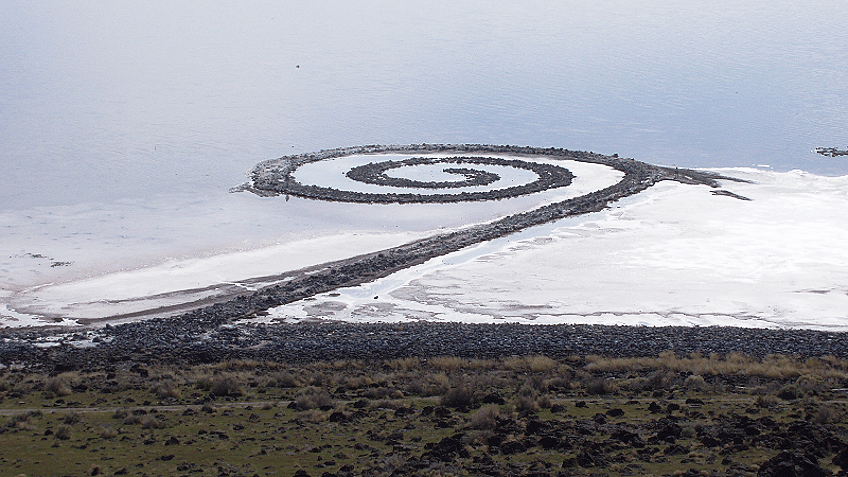
Today we have learned about the sculpting arts. Sculpture art has been used in a variety of ways since the beginning of time and understanding what distinguishes all of the different types of sculpture allows us to appreciate the time and effort that goes into creating them. For example, the various types of relief sculpture are distinguished by the degree to which these forms of sculpture vary in depth. There are even earthwork sculptures which only use parts of the land in its construction.
Frequently Asked Questions
What Is a Sculpture?
The sculpting arts are one of the oldest visual art forms still in existence, as well as one of the most conspicuous types of artwork. Forms of Sculptures are more than simply beautiful artifacts; they can teach us about past civilizations and help us comprehend history. A sculpture is a major kind of both visual and fine art. It takes the shape of three-dimensional things made of hard or plastic materials. Typically, sculptures are reliefs or freestanding items. Contemporary artists, on the other hand, may utilize sculpture as part of so-called experimental art, in which sculptures are part of contexts or tableaux that may engulf the viewer.
What Are the Materials Used in Sculpture?
Wood, marble, clay, and metals were traditional sculpting materials. Contemporary sculpture, on the other hand, can utilize any material the artist wishes, including plastic and even found things. Lights, projections, music, and other technologies may be used by modern and contemporary artists in their sculptures. 3D printing in sculpting is becoming increasingly popular as well.
Isabella studied at the University of Cape Town in South Africa and graduated with a Bachelor of Arts majoring in English Literature & Language and Psychology. Throughout her undergraduate years, she took Art History as an additional subject and absolutely loved it. Building on from her art history knowledge that began in high school, art has always been a particular area of fascination for her. From learning about artworks previously unknown to her, or sharpening her existing understanding of specific works, the ability to continue learning within this interesting sphere excites her greatly.
Her focal points of interest in art history encompass profiling specific artists and art movements, as it is these areas where she is able to really dig deep into the rich narrative of the art world. Additionally, she particularly enjoys exploring the different artistic styles of the 20th century, as well as the important impact that female artists have had on the development of art history.
Learn more about Isabella Meyer and the Art in Context Team.
Cite this Article
Isabella, Meyer, “Types of Sculpture – Our Guide to 3-Dimensional Art Formats.” Art in Context. May 10, 2022. URL: https://artincontext.org/types-of-sculpture/
Meyer, I. (2022, 10 May). Types of Sculpture – Our Guide to 3-Dimensional Art Formats. Art in Context. https://artincontext.org/types-of-sculpture/
Meyer, Isabella. “Types of Sculpture – Our Guide to 3-Dimensional Art Formats.” Art in Context, May 10, 2022. https://artincontext.org/types-of-sculpture/.


